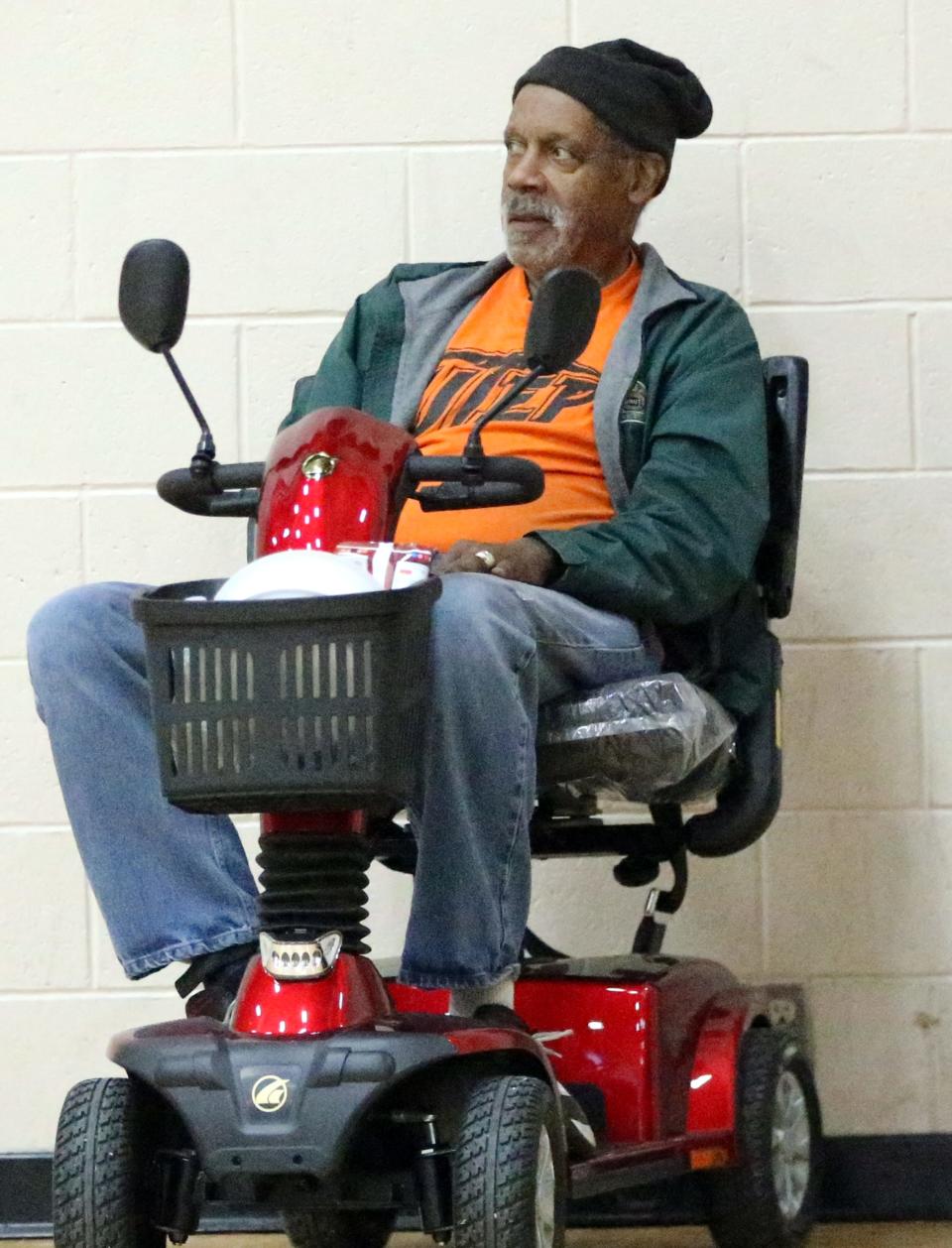Bloomquist: Willie Cager's smile brightened Haskins Center
Willie Cager loved UTEP, he loved El Paso, he loved life.
The Haskins Center was always a happier place with Cager parked on his scooter behind the baseline, cheering on whichever Miner team was in town. Unfortunately that didn't happen as much this season, the final of Cager's remarkable life, as his health declined.

The 81-year-old battled health problems his entire life, which affected his playing time on the 1966 national championship team and contributed to him not having the best shot at an NBA career.
Through a life that included two heart bypass surgeries, two strokes and other issues that left him mostly confined to his wheelchair, Cager never let it affect his sunny outlook on life. His smile was as much a part of the Haskins Center as the rims and nets.
Representing such a defining moment in UTEP history, the historic '66 national championship team that was the first NCAA champion ever with an all-black starting lineup, meant so much to Cager.
More:Memories, laughter mark 50 years of championship
There was an evolution there. As proud as UTEP and this community has become toward that '66 team, it had to be difficult being a Black Miner in the 1960s. A 1968 Sports Illustrated piece that cast the university in a terrible light quoted Cager throughout, mostly standing up for himself against poor treatment from the school. He indicated he couldn't wait to get his degree so he could go back to his native Bronx.
That all came across as perfectly understandable, but also hard to reconcile with the older Cager who became perhaps the No. 1 fan of the UTEP men and women and such a fixture in the El Paso community.
The simplest explanation is that Cager's heart was too big to hold a grudge, that he contained too much positive energy and love to dwell on what were probably very real injustices.
By virtue of his accomplishments he became a symbol of the university and that was obviously a source of much pride.
After one of the rougher losses he witnessed, the Miners' 2009 College Basketball Invitational finals setback to Oregon State, one of the victorious Beavers figured out who he was and asked for a picture. That quickly turned into an Oregon State team photo, with Cager right in the middle with a smile that if possible was bigger than normal. That moment, the being recognized and appreciated by players of a new generation, meant a lot to Cager.
He was always friendly, so approachable and down to earth, but he also carried fierce pride in the legacy of his team. He understood and appreciated what he and his team meant to so many people and he wanted to represent it in the best light.
To interact with Willie Cager was the surest cure for a bad mood. If he had bad days, and surely with his health and all he went through in the 1960s there had to have been bad days, that was never possible to guess after talking to him.
The legacy Cager left at UTEP is eternal. As long as basketball matters at the school, Cager's memory will never die.
The sight of a baseline devoid of Cager's presence will make the Haskins Center a little sadder, but the fact that he and his smile were there for so long should make every El Paso heart warmer. That's what he would want.
Bret Bloomquist can be reached at 915-546-6359; bbloomquist@elpasotimes.com; @Bretbloomquist on Twitter.
This article originally appeared on El Paso Times: Willie Cager's smile brightened El Paso's Haskins Center

